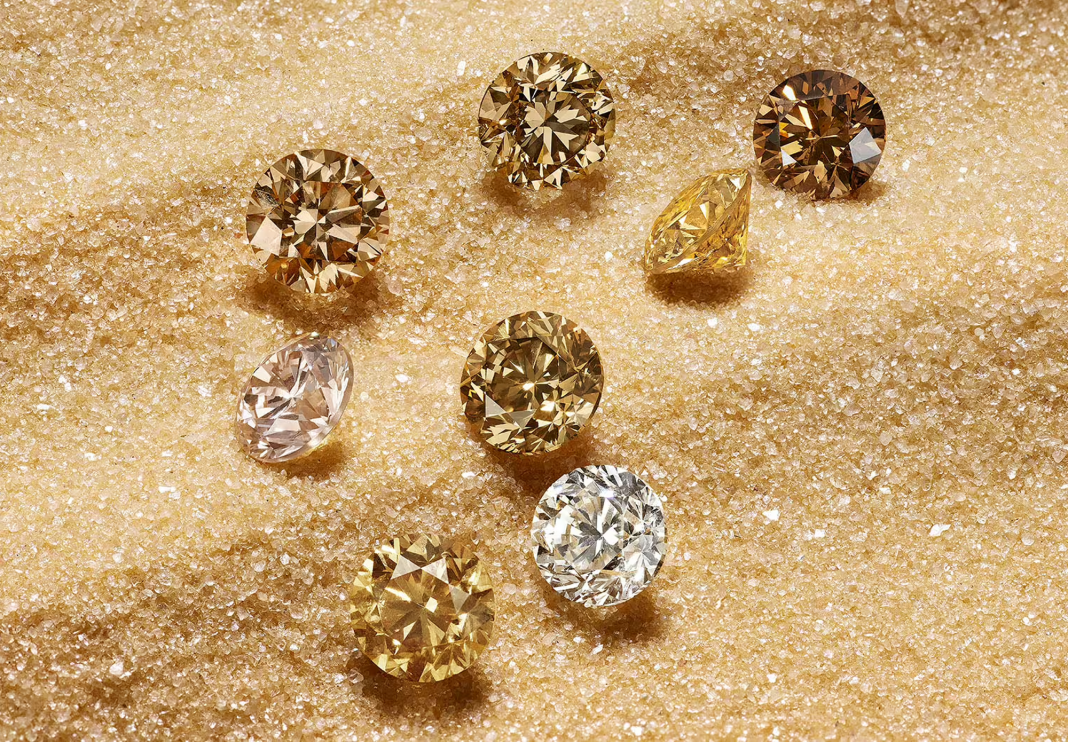At a pivotal moment for the diamond industry, De Beers is making a strategic move: reintroducing its “beacon” marketing initiative with a fresh focus on warm, earthy-colored diamonds. The newly launched “Ombré Desert Diamonds” program centers on the unique shades found only in natural stones—champagne, amber, cream, and brown—positioning them as a powerful contrast to the rising tide of lab-grown diamonds.
A return to beacon marketing, with a modern twist
For the first time in over 15 years, De Beers Group has revived its hallmark “beacon” initiative—a major marketing and design campaign intended to drive consumer demand across the diamond jewelry industry. Announced by CEO Al Cook at the company’s annual breakfast during JCK Las Vegas, the 2024 beacon, titled Ombré Desert Diamonds, reflects a significant departure from the brand’s past visual narratives.
While previous beacons such as 2009’s “Everlon” focused on specific design motifs, this new campaign is rooted in both aesthetics and provenance. The warm-toned stones that form the core of the campaign—ranging from creamy whites to golden champagnes and deep ambers—are not new to the jewelry world. Brands like Le Vian have built entire collections around these colors, dubbing them “chocolate” diamonds. Even De Beers has used them before in its “Talisman” collection. But framing them as a global centerpiece now carries new meaning in the context of a diamond industry rapidly evolving under the pressure of lab-grown competition.
The revival of a beacon initiative—once a defining feature of De Beers’ industry leadership—signals that the company is repositioning itself not just through product, but narrative. “In a world where people want something unique… a Desert Diamond does exactly that,” Cook told National Jeweler. “Its color will be unique, and its origin will be unique, and it contrasts completely with the endless array of commoditized lab-grown [diamonds].”
Drawing the line between natural and lab-grown
The reemergence of a beacon comes at a moment of growing tension between natural and lab-grown diamonds, with price gaps widening and consumer confusion deepening. The timing is not incidental. As lab-grown diamonds continue to drop in price—some selling for under $50 per carat—their appeal increasingly lies in affordability and visual perfection.
But De Beers is steering the conversation away from flawlessness and back to individuality. The choice to emphasize warm, natural hues reinforces what lab-grown stones, for all their clarity and consistency, often lack: a sense of uniqueness and origin. “People are rejecting commodities,” Cook said. “They want something real, that reflects them.”
Cook also stressed the importance of source in shaping the emotional and ethical value of diamonds. The Ombré Desert Diamonds, many of which come from African desert mines, offer a connection to landscape, culture, and history. That positioning intentionally deepens the divide between lab-created stones and those formed by nature over billions of years. The beacon campaign will be backed by media investment and digital tools for participating jewelers, helping to amplify the theme of provenance, sustainability, and personal identity.
A strategy grounded in story and sustainability

In tandem with the new design direction, De Beers is expanding its traceability tools and consumer-facing storytelling. Alongside the beacon launch, the company officially introduced Origin, De Beers Group, a loose polished diamond program powered by its blockchain platform Tracr. The system allows consumers to trace a diamond back to its mine, reinforcing trust in its ethical sourcing and natural authenticity.
Retailers participating in the program will gain access to digital assets that connect consumers with each diamond’s journey—from geological formation to polished product—an increasingly important selling point in a transparency-driven market.
Also in Las Vegas, De Beers offered updates on its broader “Origins” strategy. Among them:
- Completion of airborne geophysical surveys in Angola, marking a milestone in the company’s exploration efforts in the country.
- The first production run of industrial-grade diamonds at the newly renamed Element Six Oregon Centre, formerly the Lightbox lab-grown facility.
- The public availability of single-country origin data through Tracr, and the U.S. retail rollout of DiamondProof, a new diamond verification device.
Notably, the company reaffirmed its exit from the lab-grown jewelry business. Earlier this year, it announced the discontinuation of its Lightbox brand, with production at its Oregon site now focused exclusively on industrial diamonds.
Navigating industry change and corporate transformation
Behind the product strategies lies a much larger shift. Parent company Anglo American is actively restructuring De Beers, with plans to divest or demerge the business by 2026. During Friday’s interview in Las Vegas, Cook said he expects the separation process to begin “very shortly.”
“We’re quite fortunate that we’ve got two very responsible owners who both care a lot about De Beers,” he said, referring to both Anglo American and the future buyer. “The volatility of the last six months has just meant that we need to proceed in the right way and make sure we get the right buyer, rather than a quick one.”
That uncertainty makes the timing of the beacon all the more telling. In an industry that has seen its foundations shaken by new technologies and shifting consumer values, De Beers is returning to the fundamentals: storytelling, symbolism, and the distinct allure of the natural. By weaving design with origin, and ethics with emotion, Ombré Desert Diamonds presents more than just a new look—it proposes a new logic for luxury in the diamond world.



